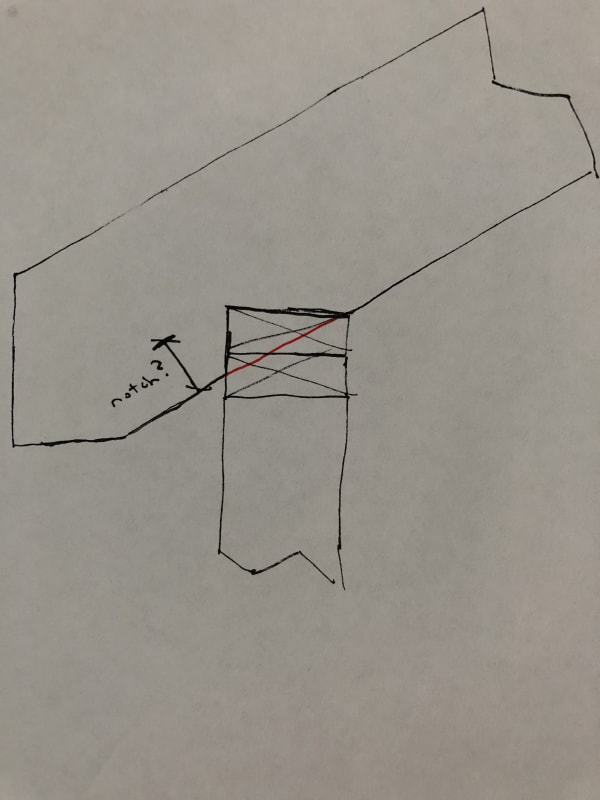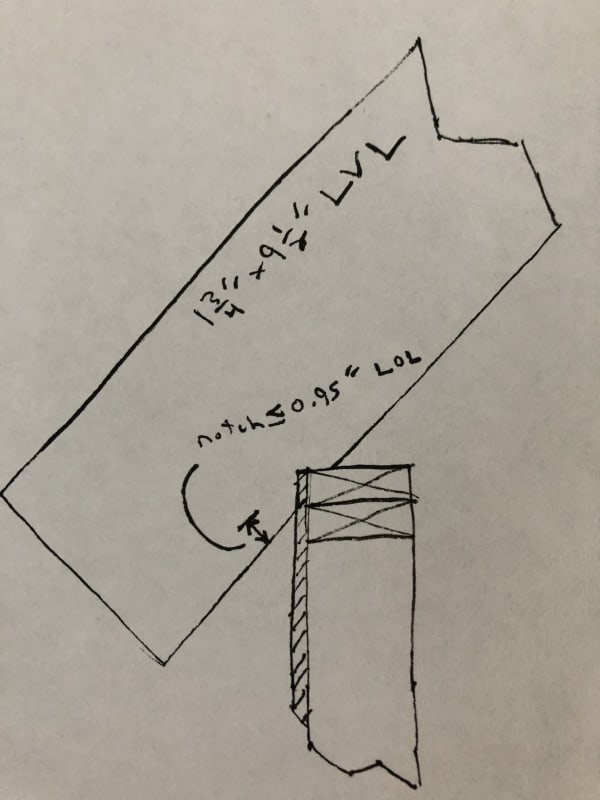SHEAR_FORCE
Structural
I am hoping to have some corroboration or denial of a new outlook on birdsmouth/seat cut notches for rafters. The approach has always been a max notch of depth/4, which is currently supported in the Wood Frame Construction Manual (WFCM) 2.5.1.1.4. The 2018 NDS mentions in 3.2.3.2 that the stiffness is unaffected by a notch at depth/6 but I can't find anywhere else in the NDS that allows for a prescriptive shear allowance of depth/4 at supports.
We are in snow country in California where snow loads are almost always above the WFCM design limit of 70psf, so we can't use the prescriptive method, correct? This would mean that every rafter with a birdsmouth/seat cut notch would need to be designed for the lower shear value using the NDS equation 3.4-3, which is very restrictive in comparison to the prescriptive depth/4. It doesn't seem like a burden to make the change but I would like to be sure as I have never seen another engineer take this approach for sizing all rafters.
We are in snow country in California where snow loads are almost always above the WFCM design limit of 70psf, so we can't use the prescriptive method, correct? This would mean that every rafter with a birdsmouth/seat cut notch would need to be designed for the lower shear value using the NDS equation 3.4-3, which is very restrictive in comparison to the prescriptive depth/4. It doesn't seem like a burden to make the change but I would like to be sure as I have never seen another engineer take this approach for sizing all rafters.


